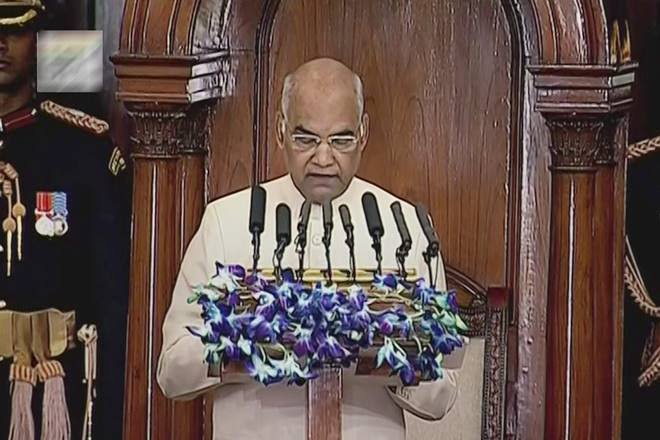The Code on Social Security, 2020 was introduced in Lok Sabha by the Minister of State for Labour and Employment, Mr. Santosh Kumar Gangwar, on September 19, 2020. On 22nd September 2020, Lok Sabha passed 3 bills related to labour reforms. These are are (i) Industrial Relations Code 2020 (ii) Code on Occupational Safety, Health & Working Conditions Code, 2020 & (iii) Social Security Code, 2020. On 23rd September 2020, these three bills were passed by Rajya Sabha.
Social Security Code 2020 replaces nine laws related to social security, including the Employees’ Provident Fund Act, 1952, the Maternity Benefit Act, 1961, and the Unorganised Workers’ Social Security Act, 2008.
Social Security Code 2020: Salient Features:
- Social security refers to measures to ensure access to health care and provision of income security to workers.
- Social security schemes: Under the Code, the central government may notify various social security schemes for the benefit of workers. These include an Employees’ Provident Fund (EPF) Scheme, an Employees’ Pension Scheme (EPS), and an Employees’ Deposit Linked Insurance (EDLI) Scheme. These may provide for a provident fund, a pension fund, and an insurance scheme, respectively. The government may also notify: (i) an Employees’ State Insurance (ESI) Scheme to provide sickness, maternity, and other benefits, (ii) gratuity to workers on completing five years of employment (or less than five years in certain cases such as for journalists and fixed term workers), (iii) maternity benefits to women employees, (iv) cess for welfare of building and construction workers, and (v) compensation to employees and their dependants in the case of occupational injury or disease.
- In addition, the central or state government may notify specific schemes for gig workers, platform workers, and unorganised workers to provide various benefits, such as life and disability cover. Gig workers refer to workers outside of the traditional employer-employee relationship (e.g., freelancers). Platform workers are workers who access other organisations or individuals using online platforms and earn money by providing them with specific services. Unorganised workers include home-based and self-employed workers. It also provides for social security funds for unorganised workers, and gig and platform workers.
- Coverage and registration: The Code specifies different applicability thresholds for the schemes. For example, the EPF Scheme will apply to establishments with 20 or more employees. The ESI Scheme will apply to certain establishments with 10 or more employees, and to all establishments which carry out hazardous or life-threatening work notified by the central government. These thresholds may be amended by the central government. All eligible establishments are required to register under the Code, unless they are already registered under any other labour law.
- Contributions: The EPF, EPS, EDLI, and ESI Schemes will be financed through a combination of contributions from the employer and employee. For example, in the case of the EPF Scheme, the employer and employee will each make matching contributions of 10% of wages, or such other rate as notified by the government. All contributions towards payment of gratuity, maternity benefit, cess for building workers, and employee compensation will be borne by the employer. Schemes for gig workers, platform workers, and unorganised workers may be financed through a combination of contributions from the employer, employee (or aggregators for gig workers and platform workers), and the appropriate government.
- For the purpose of schemes for gig and platform workers, the Bill specifies a list of aggregators including ride sharing services and food delivery services. Any contribution from an aggregator may be at a rate notified by the government falling between 1-2% of the annual turnover of the aggregator, subject to a cap of 5% of the amount paid or payable by an aggregator to the gig and platform workers.
- Social security organisations: The Code provides for the establishment of several bodies to administer the social security schemes. These include: (i) a Central Board of Trustees, headed by the Central Provident Fund Commissioner, to administer the EPF, EPS and EDLI Schemes, (ii) an Employees State Insurance Corporation, headed by a Chairperson appointed by the central government, to administer the ESI Scheme, (iii) National and State Social Security Boards, headed by the central and state Ministers for Labour and Employment, respectively, to administer schemes for unorganised workers (with the National Board also responsible for gig and platform workers), and (iv) state-level Building Workers’ Welfare Boards, headed by a Chairperson nominated by the state government, to administer schemes for building workers.
- Inspections and appeals: The appropriate government may appoint Inspector-cum-facilitators to inspect establishments covered by the Code, and advise employers and employees on compliance with the Code. Administrative authorities may be appointed under the various schemes to hear appeals under the Code. For instance, the appropriate government may notify an appellate authority to hear appeals against the order of the Inspector-cum-facilitator for non-payment of maternity benefits. The Code also specifies judicial bodies which may hear appeals from the orders of the administrative authorities. For example, industrial tribunals (constituted under the Industrial Disputes Act, 1947) will hear disputes under the EPF Scheme.
- Offences and penalties: The Code specifies penalties for various offences, such as the failure to pay gratuity, which may be punished with imprisonment of one year. Some offences may also be compounded (settled).
References:
- The bill summary has been reproduced from PRS website, the content belongs to PRS only. Original Source.
- The Social Security Code 2020 – Download PDF
- PIB NEWS



